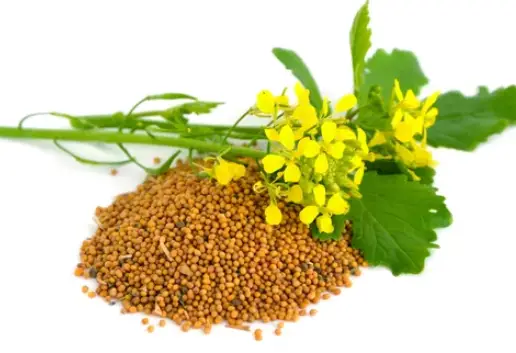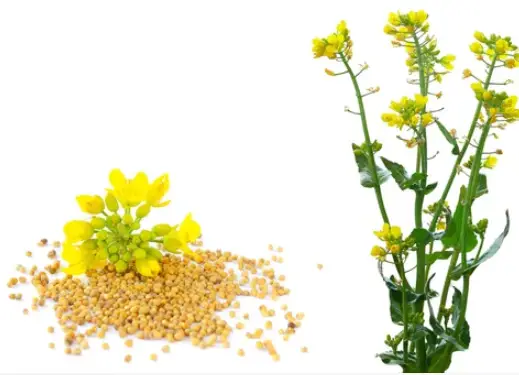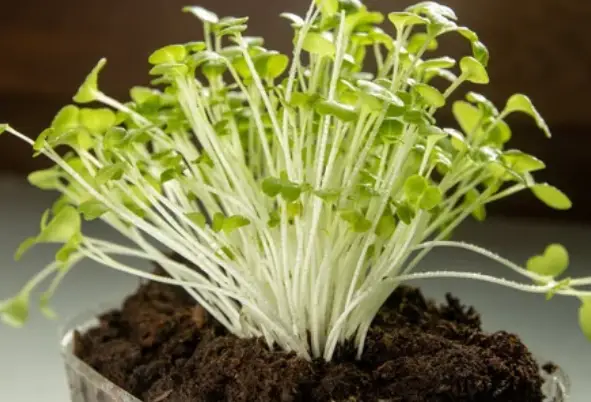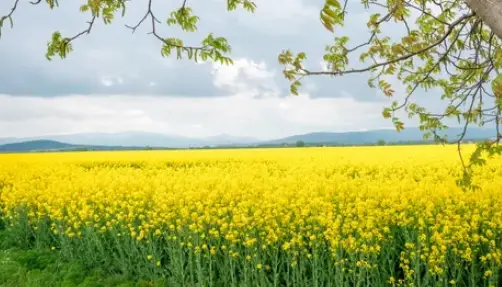The mustard seed plant, also known as Brassica juncea, is a widely cultivated plant species in the family Brassicaceae.
It is widely grown for its seeds, which are used as a spice or condiment in many cuisines around the world.
But have you ever wondered what this plant actually looks like?
In this blog post, we will explore the distinctive features of the mustard seed plant and delve into its unique beauty.
What Does a Mustard Seed Plant Look Like?

Leaves
The leaves of the mustard seed plant are green and vary in shape, size, and texture depending on the cultivar.
Some leaves are smooth and shiny, while others are rough and dull.
They can be simple or lobed and can range in size from small to large. The leaves are also edible and are sometimes used as a green in salads or as a substitute for spinach.
Stem
The stem of the mustard seed plant is sturdy and can grow up to three feet in height. It is usually green and is covered in small, stiff hairs.
The stem provides support for the plant and helps to transport water and nutrients from the roots to the rest of the plant.
Flowers
The flowers of the mustard seed plant are small and yellow in color, and they grow in clusters at the end of the stem.
They have four petals and are typically about one centimeter in diameter.
The flowers are pollinated by insects, and after pollination, they develop into seeds that are used for food and spices.
Seeds

The seeds of the mustard seed plant are the source of the well-known condiment of the same name.
They are small, and round, and range in color from brown to black. The seeds are used to make a mustard paste, and mustard powder, and are also used as a flavoring ingredient in various dishes.
Growth Habit

The mustard seed plant is an annual or biennial herb that grows in a range of soils and climates.
It is a fast-growing plant and can reach a height of up to three feet. The plant has a branching habit, and its stems are covered in small, stiff hairs.
The plant is drought-tolerant and can withstand cold temperatures, making it a suitable option for gardeners in a variety of regions.
Foliage
The foliage of the mustard seed plant is variable, with leaves ranging in shape from simple to lobed, and in size from small to large.
The leaves are green and can be either smooth or rough, depending on the cultivar.
They are also edible and can be used in salads or cooked as a green.
Culinary Uses
Mustard seeds are a staple ingredient in many cuisines around the world, used as a spice or condiment to add flavor to dishes.
They can be used whole, ground, or as a paste, and are a common ingredient in Indian and Middle Eastern cuisine.
Mustard seeds can also be used to make pickles, sauces, marinades, and rubs.
Medicinal Properties
Mustard seed plant has been used for medicinal purposes for thousands of years.
The seeds contain compounds that have been found to have anti-inflammatory, antioxidant, and analgesic properties.
Mustard seeds have also been used to treat respiratory conditions, skin disorders, and digestive problems.
Conclusion
The mustard seed plant is a versatile and useful plant that can be grown for its seeds, foliage, and flowers.
Its fast-growing habit, tolerance to a variety of soils and climates, and wide range of uses make it an ideal choice for gardeners and food enthusiasts alike.
Whether you are growing it for its culinary uses, medicinal properties, or just for its beauty, the mustard seed plant is truly a remarkable plant.




